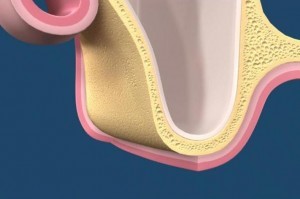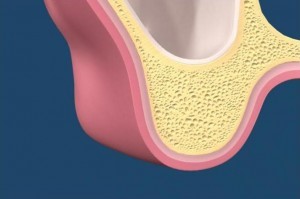Our dental experts perform all types of dental implant supporting procedures, including sinus lift bone grafts, also known as sinus elevation. The success rate for a sinus lift is usually quite high as long as it is carried out by experienced implant dentists and strict care is followed after the procedure. A dental sinus lift is a complicated procedure that comes with little to no risk and should only be attempted by expert dentist with appropriate training.
Why Would a Sinus Lift Bone Graft Be Required?
In some cases of dental implants, there is not enough bone to place the implants in the upper arch. When this is the case, the sinus cavity increases and bone loss occurs, which can lead to insufficient bone height. A sinus lift surgery increases the upper arch where the sinuses are located. If the depth of the bone is insufficient to take an implant, the base of the sinus cavity is raised to create more depth. With a sinus lift surgery, implants can be made for people with missing or falling teeth.
A sinus lift procedure can help to solve following issues:
- Bone resorption
- Insufficient bone due to missing teeth or tooth loss
- Complex bone anatomy
About the Procedure
Bone loss can occur as a result of missing teeth for long periods of time. Air in the sinus can contribute to bone loss through pressure on the jawbone. In some cases there is a lack of sufficient bone under the upper sinus for implant placement initially. A bone graft may be necessary to raise the sinus and create stability for the implant. This procedure is often referred to as a “sinus lift” or a “lateral wall sinus elevation.” A sinus lift not only restores a strong jawbone to place implants into but also may relieve some sinus drainage problems.
In this procedure, the surgeon will cut the tissue on the cheek side of the upper jaw. The tissue is then raised, exposing the surface of the bone lying underneath. The exposed bone is cut in a way that it creates a small window in the bone. The movable part of the bone is then pushed inwards and upwards into the sinus cavity. The bone carries the sinus membrane along with it, thus lifting the membrane to a higher level. The bone graft material is then packed into the space where the sinus was. Once the bone graft is in place, the tissue is closed.
In some instances, the dentist may place the implants at the same time when the sinus lift is performed. But in most cases, a healing time of six to nine months is needed before the implant is done.
After the Procedure
After the procedure, you may have some swelling in the surgery area. There can be some bleeding from the mouth or nose. Make sure you do not blow your nose or sneeze with force. Your dentist may give you pain medicine, antibiotics and anti-bacterial mouthwash to prevent infection. After a sinus procedure, you need to wait for the bone material to harden. Depending on the bone grafting material used, the dental implants may be placed in four to nine months. The cost of a sinus lift depends on the complexity and material used for bone grafting.
Types of bone grafting material used in sinus lift procedure include:
- In most of the cases, patient’s own material taken from some other location in their mouth or from other bones is used
- In other instances, prepared material can be purchased from a tissue bank
- Another option is to use synthetic graft material such as hydroxyapatite

Severe bone loss under the sinus cavity.

Regeneration of abundant bone via sinus graft.
A sinus lift not only restores strong jawbone to place implants into but also may relieve some sinus drainage problems.
If you would like to learn more about sinus elevations in Fairfield, Connecticut, contact Fairfield County Implants and Periodontics, LLC at 203-254-2006 today and schedule an appointment with our dentists, Dr. Michael Sonick, Dr. Rui Ma or Dr. Evelyn Spencer.

